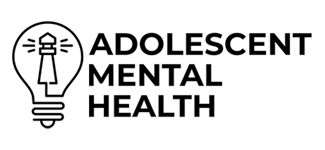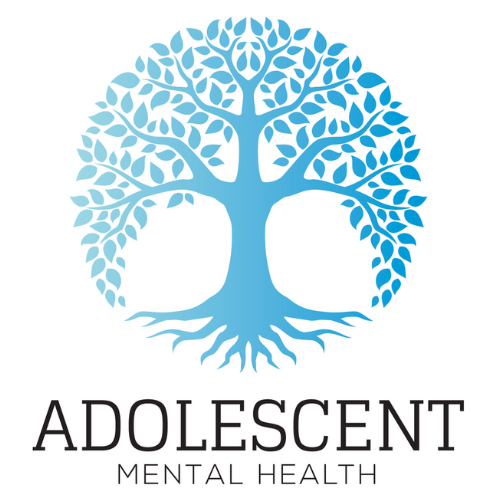Test Anxiety vs. General Anxiety in High School: Understanding and Managing Teen Anxiety Symptoms
Test anxiety and generalized anxiety disorder (GAD) are distinct but sometimes overlapping problems that affect many high school students. Test anxiety is a situational form of performance-related stress that spikes before and during exams, producing acute physiological arousal and cognitive interference that reduce performance. By contrast, generalized anxiety reflects persistent, excessive worry across multiple areas of life and can erode sleep, concentration, and daily functioning. This article explains how to spot the differences between exam-linked stress and pervasive anxiety, summarizes symptom clusters for parents and educators, and outlines practical in-class strategies plus longer-term treatments.
You will find clear symptom checklists, a side-by-side diagnostic comparison, evidence-based coping techniques, and guidance on when to escalate care. Finally, the piece describes how virtual treatment models—including virtual Intensive Outpatient Programs designed for teens—support adolescents who need structured clinical care. Read on to learn how to recognize, respond to, and when appropriate refer students experiencing test anxiety or broader anxiety disorders.
What Are the Key Symptoms of Test Anxiety in High School Teens?
Test anxiety is a situational form of performance anxiety that emerges in anticipation of or during exams and assessments, producing physical arousal, intrusive negative thoughts, and avoidance behaviors. The mechanism involves an acute stress response that narrows attention and impairs working memory, which directly reduces exam performance. Recognizing symptom patterns by domain (physical, cognitive, behavioral) helps parents and teachers choose targeted supports quickly. Below is a compact table to map symptom domains so adults can spot consistent patterns and act early.
The table below compares common symptom domains for test anxiety to help identify which students need immediate in-room supports versus longer-term interventions.
| Symptom Domain | Common Signs | Typical Example |
|---|---|---|
| Physical | Sweating, nausea, rapid heartbeat | Student reports stomach pain before tests |
| Cognitive | Blanking, catastrophic thinking, difficulty retrieving facts | Student “forgets” answers under pressure |
| Behavioral | Procrastination on studying, exam avoidance, last-minute cramming | Student skips review sessions or avoids tests |
This domain-focused view clarifies that test anxiety primarily appears around evaluative situations and tends to resolve when the trigger passes. Use these patterns to decide whether in-class adjustments or clinical referral is needed next.
School-Based Test Anxiety Prevention Programs for Children
The purpose is to examine the impact of a school-based test anxiety prevention program on a sample of Singaporean fourth grade students relative to their levels of academic achievement and to identify active treatment components.
3. 115 children aged 9–12 were assigned to group-based cognitive-behavioral treatment (n= 58) or control condition (n= 57). They completed the Children’s Test Anxiety Scale and Cognitive-Behavioral Skills Checklist at pre-, post-treatment, and 2 months’ follow-up. Anxiety ratings were hypothesized to be lower for the intervention than the control group at post-treatment. Skills that contributed to treatment outcomes were identified.
4. A mixed-design analysis of variance revealed significant test anxiety reduction with medium treatment effect that was maintained for the intervention group across time. There was no change in the control group. Behavioral skills (e.g., relaxation exercises, study skills) contributed to treatment outcomes. Cognitive skills such as calming self-talk did not.
5. The study provided preliminary evidence on the utility of brief, school-based anxiety interventions in test anxiety prevention for children. It added credence to adopting behavioral over cognitive strategies in treating test anxious children. Children with severe test anxiety at baseline benefited particularly from treatment.
School-based intervention for test anxiety, LS Yeo, 2016
How Does Test Anxiety Affect Teenagers During Exams?
Test anxiety often disrupts the very cognitive processes students need to succeed by inducing physiological arousal and narrowing working memory capacity. When a teen experiences intense worry, intrusive negative thoughts consume attentional resources and make it harder to recall studied information, which researchers link to performance drops. In practice, this looks like blanking on familiar material, second-guessing answers, or excessive time spent on early questions. A brief in-test strategy such as paced breathing and a five-second grounding routine can reduce arousal and restore access to memory. Practicing simulated exams with stress-management techniques lowers the physiological response over time and improves real-world performance.
What Physical and Emotional Signs Indicate Test Anxiety?
Physical and emotional signs of test anxiety commonly appear in the hours or minutes leading up to an exam and can be distinct from ordinary nerves by their intensity and interference. Physically, teens may experience stomachaches, headaches, shaking, or heart palpitations that are disproportionately strong relative to the situation. Emotionally, they may show abrupt irritability, panic-like distress, excessive self-criticism, or catastrophic expectations about failure. Observing patterns—symptoms that cluster only around tests versus present across multiple situations—helps differentiate situational anxiety from a broader disorder. Simple accommodations like extra time, quiet testing spaces, or brief grounding breaks can reduce immediate symptoms and help identify persistent cases needing further assessment.
How Can You Differentiate General Anxiety Disorder from Test Anxiety in Adolescents?

Differentiating generalized anxiety disorder (GAD) from situational test anxiety hinges on duration, trigger pattern, and cross-context impact: GAD is chronic and pervasive, while test anxiety is time-linked to evaluations. The core diagnostic implication is that persistent worry across domains with sleep or functional decline suggests a clinical evaluation, whereas performance-only symptoms typically respond to targeted test-focused interventions. The table below gives a concise side-by-side comparison of duration, triggers, and functional impact to clarify next steps for parents and educators.
| Attribute | Typical Duration | Trigger Pattern | Clinical Implication |
|---|---|---|---|
| Test Anxiety | Short-term, linked to assessment periods | Situational: exams, presentations | Try targeted skills training and school accommodations first |
| Generalized Anxiety Disorder | Weeks to months, persistent | Pervasive: school, relationships, health | Recommend clinical assessment; consider multi-session therapy |
| Overlap / Comorbidity | Varies | Situational + pervasive symptoms co-occur | May need combined approaches and specialist referral |
This structured comparison shows that timing and scope of impairment are the most reliable clues for deciding whether school supports or clinical care are warranted. When symptoms interfere with grades, relationships, or safety, referral becomes urgent.
What Are the Common Signs of Generalized Anxiety Disorder in High School Students?
Generalized anxiety disorder in adolescents typically presents as persistent, excessive worry about multiple domains—school performance, social acceptance, family health—that lasts for weeks or months and is difficult to control. Associated symptoms often include restlessness, fatigue, irritability, sleep disruption, and concentration problems that impair homework completion and classroom attention. In school settings GAD may appear as chronic homework avoidance, frequent visits to the nurse for vague complaints, or declining grades despite effort. Because GAD affects multiple life areas, clinicians often assess broader functioning and consider multi-session evidence-based therapies when impairment is substantial.
How Do Situational Test Anxiety and Pervasive General Anxiety Differ?
Situational test anxiety arises predictably around evaluative events and primarily impairs performance during those times, while generalized anxiety disorder produces continuous worry and functional decline across settings. Key differences include timing (temporary vs. ongoing), breadth (exam-only vs. multiple domains), and treatment emphasis (skills-focused practice vs. structured therapy and possible medication evaluation). For example, graded exposure and rehearsal of testing conditions suits test anxiety, whereas CBT over multiple sessions addresses the maladaptive worry cycles of GAD. Recognizing these distinctions enables educators to apply appropriate school-based supports quickly and to trigger clinical referral when symptoms are pervasive.
What Are Effective Strategies for Managing Test Anxiety and General Anxiety in Teens?
Effective management blends immediate, exam-focused techniques with longer-term skill-building that targets underlying anxiety patterns, using evidence-based CBT and DBT principles adapted for adolescents. Short-term strategies—such as paced breathing, structured study plans, and practice exams—reduce arousal and increase familiarity with test conditions, which lowers the physiological stress response. Longer-term approaches include cognitive restructuring to challenge catastrophic thoughts, graded exposure to feared tasks, sleep and exercise routines that stabilize mood, and DBT-based distress tolerance for acute panic. Below is a concise list of practical techniques parents, teachers, and students can apply.
- Paced Breathing and Grounding: Use 4-4-4 breathing and a 5-second grounding checklist before exams.
- Structured Study & Practice Tests: Break study into short, scheduled blocks and simulate testing conditions.
- Cognitive Reframing: Teach teens to identify and challenge catastrophic “I’ll fail” thoughts.
- Behavioral Routines: Prioritize sleep, regular exercise, and consistent study schedules.
These strategies create a layered approach: immediate symptom relief during tests plus skill acquisition to reduce future episodes. When classroom adjustments and these self-help strategies do not reduce impairment, consider escalating to professional care.
Adolescent Mental Health’s virtual treatment options complement these self-help approaches when structured clinical support is necessary. Their Virtual Intensive Outpatient Programs provide structured, intensive online therapy with licensed professionals trained in evidence-based approaches such as CBT and DBT, and they are tailored exclusively for teens aged 12–17. These programs work with major insurance plans and offer affordable out-of-pocket options, and typical program intensity ranges from 9–15 hours per week delivered across 3–5 days. Brief clinical assessment and a comprehensive intake guide individualized plans that fit alongside school schedules.
Which Coping Techniques Help Reduce Academic Stress and Anxiety?
Practical coping techniques reduce academic stress by targeting the physiological arousal, maladaptive thoughts, and avoidance behaviors that undermine performance. Cognitive Behavioral Therapy (CBT) methods like cognitive restructuring help teens reframe negative predictions, while graded exposure and repeated practice reduce avoidance and desensitize fear of failure. Dialectical Behavior Therapy (DBT) skills such as distress tolerance and emotion regulation add concrete tools for managing acute panic during exams. Behavioral supports—sleep hygiene, consistent exercise, and organized study routines—stabilize mood and improve concentration, creating an environment where learned cognitive and emotion skills can translate into better academic outcomes.
When Should Parents and Educators Seek Professional Help for Teen Anxiety?
Parents and educators should seek professional assessment when anxiety causes persistent functional decline, such as falling grades, chronic absenteeism, withdrawal from activities, sleep disruption, or safety concerns like self-harm talk. A practical checklist helps decide when to escalate: duration beyond several weeks, symptoms across multiple settings, notable decline in daily functioning, or failed response to school supports and basic coping strategies. If those red flags appear, refer the family for clinical evaluation that can determine whether outpatient therapy suffices or if a structured program—such as an intensive outpatient track—is needed. Early referral improves outcomes by targeting treatment before patterns become entrenched.
Red flags warranting clinical referral:
- Persistent symptoms lasting several weeks that impair school or relationships.
- Significant decline in academic performance or daily functioning.
- Avoidance of activities or repeated health complaints preventing attendance.
How Does Virtual Therapy Support Treatment for Anxiety in High School Students?

Virtual therapy, including Virtual Intensive Outpatient Programs (IOPs), delivers structured, evidence-based treatment to teens in an accessible online format that respects school schedules and family logistics. These programs combine regular live sessions with licensed clinicians, skills training groups, and individualized treatment plans to reduce symptoms and improve functioning. Key benefits include convenience for busy families, continuity of care when in-person options are limited, and specialized clinicians trained in adolescent-focused CBT and DBT. The table below maps program features to family-centered benefits to clarify how virtual IOPs translate into practical outcomes for students.
| Program Feature | Service Feature | Benefit |
|---|---|---|
| Licensed teen clinicians | Live online sessions and skills groups | Developmentally appropriate therapy for adolescents |
| Program intensity | 9–15 hours per week across 3–5 days | Structured, concentrated treatment without hospitalization |
| Insurance compatibility | Works with major insurance plans; affordable out-of-pocket | Reduced financial and logistical barriers for families |
Virtual IOPs offer families practical advantages by combining intensity with convenience so teens can access consistent care without disrupting school or family routines. For busy households, online delivery eliminates transportation and scheduling barriers, improving attendance and treatment engagement. Clinically, virtual formats preserve core elements of CBT and DBT—skills training, exposure work, and therapist-guided practice—while enabling regular progress monitoring and individualized adjustments. Typical program structures provide 9–15 hours of treatment per week across several days, which balances therapeutic intensity with the ability to remain at home and maintain academic responsibilities. These aspects make virtual IOPs particularly useful for adolescents whose anxiety has escalated beyond what weekly outpatient therapy manages.
CBT and DBT translate effectively to virtual settings through structured sessions that combine therapist-led instruction, interactive skills practice, and homework assignments to reinforce learning between meetings. CBT online focuses on cognitive restructuring exercises, guided exposures (often adapted for virtual or school contexts), and measurable behavioral experiments that reduce avoidance and correct distorted thinking. DBT online emphasizes emotion regulation modules, distress tolerance techniques, and interpersonal effectiveness skills taught via group and individual sessions. Recent telehealth research and clinical experience indicate that when virtual programs maintain fidelity to evidence-based protocols and use trained adolescent clinicians, outcomes for anxiety symptoms are comparable to in-person care.
For families considering higher-intensity treatment, contacting a teen-focused virtual provider can streamline intake and insurance verification; many programs begin with a comprehensive clinical assessment to match treatment intensity to the teen’s needs. Adolescent Mental Health offers virtual IOP pathways and clinician-led care that align with these evidence-based approaches, supporting teens aged 12–17 with structured online therapy and coordinated clinical assessment to determine the right level of care. If school performance, safety, or daily functioning are significantly affected, pursuing an initial clinical assessment and verifying insurance coverage are practical next steps to get timely help.









